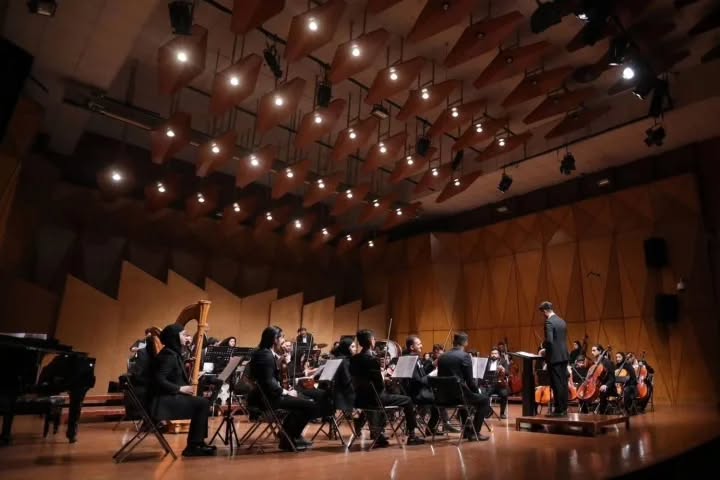
The final performance of the Persian year at Roudaki Hall in Esfand 1402 featured the Vasta Isfahan Philharmonic Orchestra, conducted by Pouya Vali Khani. The concert, which included a diverse range of works from Latin American to Russian, European, and Iranian composers, revealed both the strengths and struggles of the orchestra. Despite their best efforts, the musicians faced difficulties with rhythm and synchronization, especially in more challenging pieces like Arturo Márquez’s Danzón. Yet, the evening also highlighted the importance of regional orchestras in promoting orchestral music across the country, with Roudaki Hall filled with a dedicated audience, many of whom had traveled from Isfahan.
In Esfand 1402(Solar calendar), the Roudaki Hall hosted the Vasta Isfahan Philharmonic Orchestra, led by Pouya Vali Khani, for the last performance of the year. The program featured works by composers from South America, Europe, Russia, and Iran, including Arturo Márquez from Mexico, Sergei Prokofiev, Johann Strauss, Tchaikovsky, Farid Omran, and Hossein Dehlavi with the piece Bijan and Manizheh. As the performance progressed, it became clear that these pieces might have been difficult and exhausting for the musicians of this orchestra. From the very beginning, the orchestra struggled with rhythm. In the opening piece, Radetzky March by Johann Strauss, rhythmic inconsistencies were immediately noticeable in some sections.
However, the most problematic piece in this concert was Danzón by Arturo Márquez, which presents challenges for many seasoned Iranian orchestras. Unfortunately, there were numerous instances of blurry notes, and at some moments, the percussionists completely fell behind the orchestra. This piece has a Latin music vibe, where rhythm is a crucial element. Understanding Latin rhythms is essential to performing this piece correctly, but unfortunately, this was not communicated to the audience in this performance. The trumpet player also struggled during the solos, and the number of accurate notes played could be counted on one hand. Ultimately, the orchestra was only able to finish the piece.
Throughout the performance, stress and anxiety were visible on some musicians’ faces. At one point, I noticed a musician whose hand was trembling during the silences, and interestingly, the musician next to him was trying to calm him down. Some string players also appeared dissatisfied with their performance by the end of the piece. From my perspective as a listener, this anxiety was transmitted to me as well. Perhaps they should have chosen easier pieces for this performance. In Bijan and Manizheh by Hossein Dehlavi, the pizzicatos in the strings were not synchronized, and the tremolos lacked uniform speed among the players.
However, the notable aspect of this performance was that Roudaki Hall was almost completely filled, with many of the audience members traveling from Isfahan to Tehran to attend. The Vasta Isfahan Philharmonic Orchestra is one of the active orchestras in the country, and the presence of private orchestras in regional cities plays a significant role in promoting orchestral music among the public. Although this performance did not meet acceptable quality standards, it is important to remember that the quality of an orchestra cannot be judged by just one performance. The existence of this orchestra in a city renowned for its arts and culture is a positive sign. The performance of the Vasta Isfahan Philharmonic Orchestra in the capital is a valuable experience for the young, talented musicians of this orchestra. Hopefully, with proper planning, these musicians will continue to grow more skilled and shine brightly in the country’s music scene—an outcome that is not out of reach.
Written By Farid Parish
